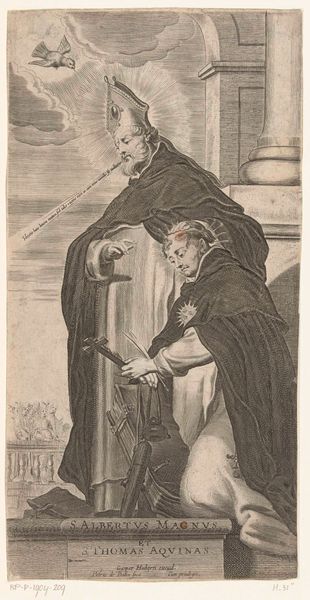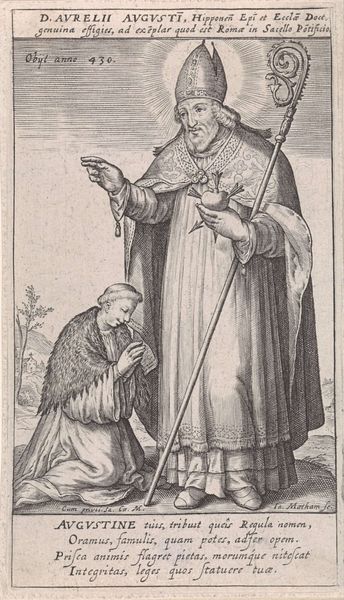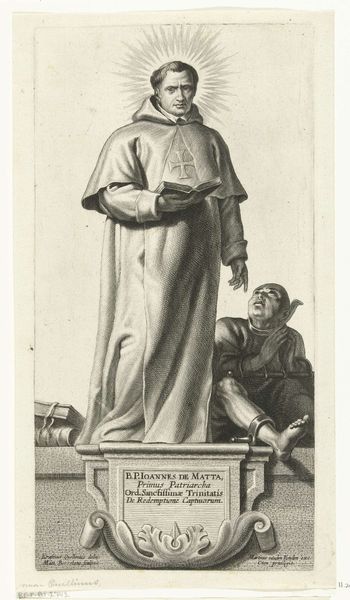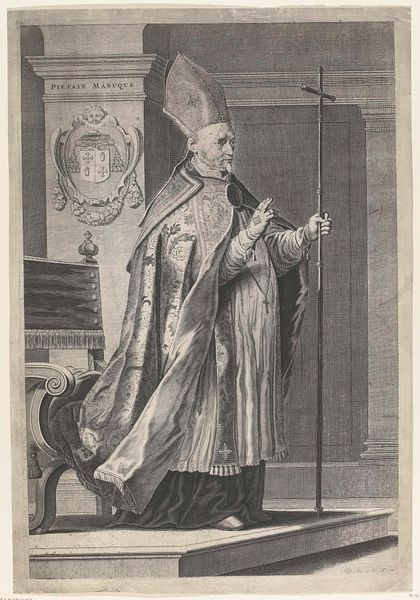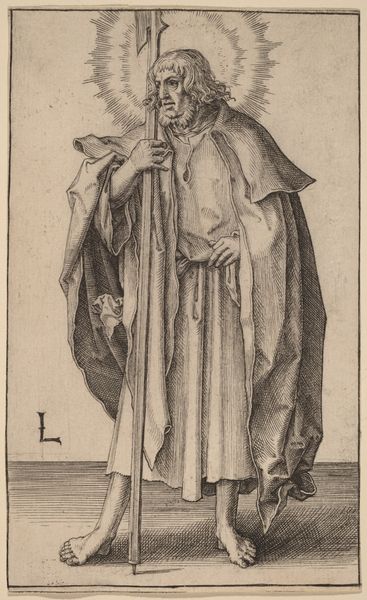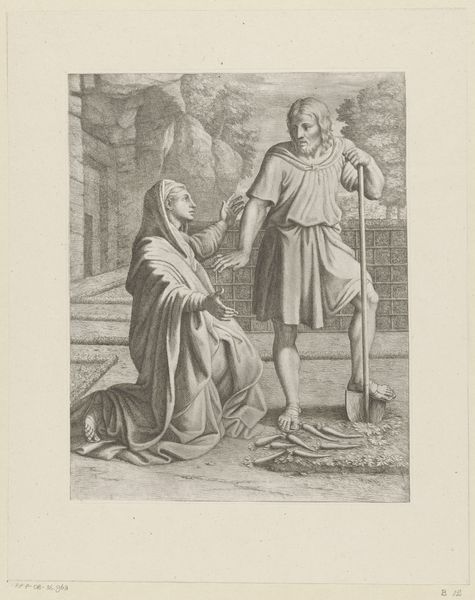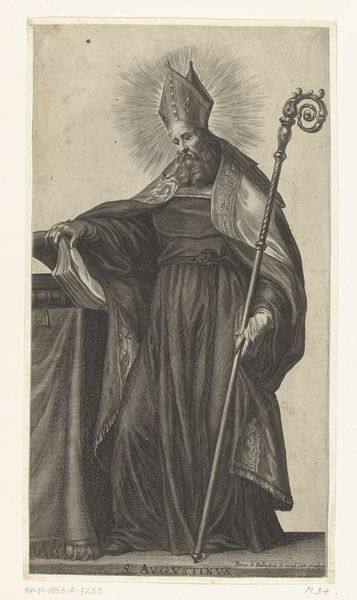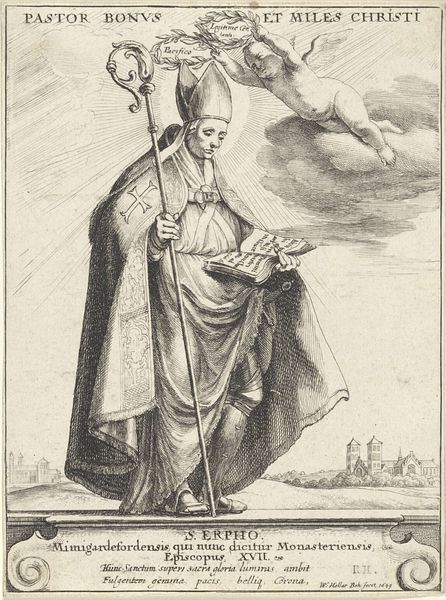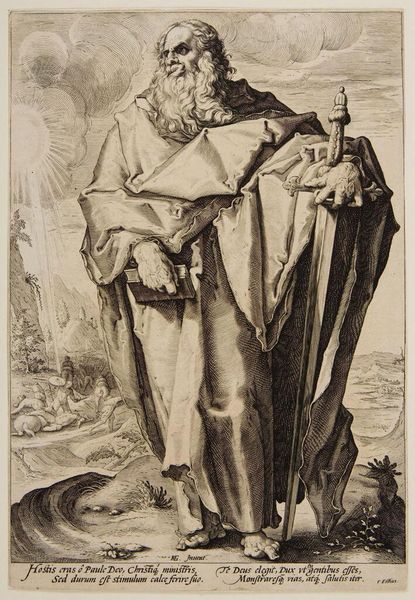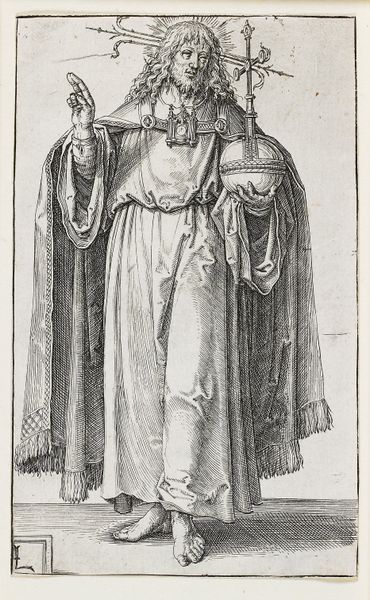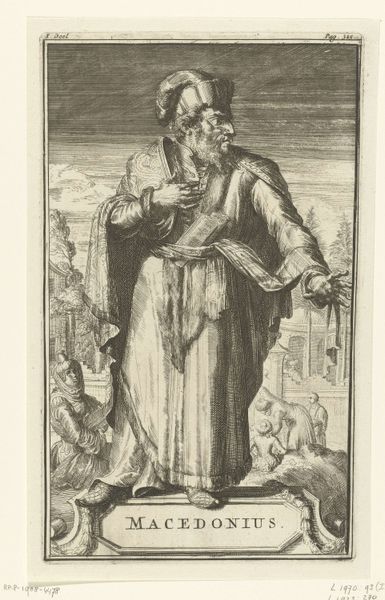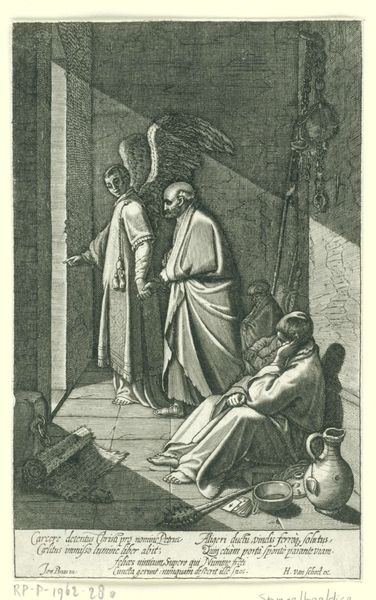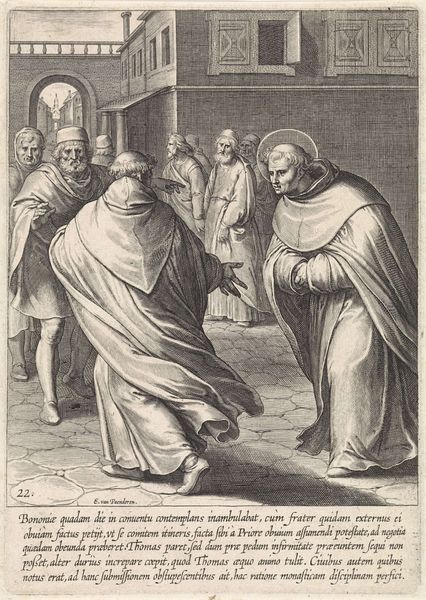
Dominicaanse heiligen Albertus Magnus en Thomas van Aquino 1623 - 1660
0:00
0:00
engraving
#
portrait
#
baroque
#
pencil drawing
#
history-painting
#
engraving
Dimensions: height 264 mm, width 137 mm
Copyright: Rijks Museum: Open Domain
Editor: Here we have Pieter de Bailliu’s “Dominicaanse heiligen Albertus Magnus en Thomas van Aquino,” an engraving from between 1623 and 1660, now at the Rijksmuseum. The halos and serious faces give it a really reverent, solemn feeling. How would you interpret this work? Curator: Primarily, one must consider the visual organization. Note how the composition employs a distinct verticality, emphasized by the towering figure of Albertus Magnus above Thomas Aquinas. This creates a clear visual hierarchy. The linearity is further enhanced by the use of hatching and cross-hatching to define form and create tonal variation, even a semblance of depth. Observe, also, the contrasting textures, from the smoothness of the saints' faces to the intricate details of their robes and the surrounding accoutrements. Editor: I see what you mean about the textures. Why do you think he chose such fine detail? Curator: The deliberate inclusion of meticulous details, in fact, heightens the work's complexity and enriches the viewer's engagement with its intrinsic materiality. What impact does the contrast in scale and the dynamic posture of the kneeling saint have on the reading of this work? Editor: I suppose the size difference emphasizes their different roles or levels of importance, while the kneeling adds a sense of movement and maybe humility. I learned a lot by looking more closely at the elements of composition! Curator: Indeed. The organization of its visual elements yields invaluable insights.
Comments
No comments
Be the first to comment and join the conversation on the ultimate creative platform.
